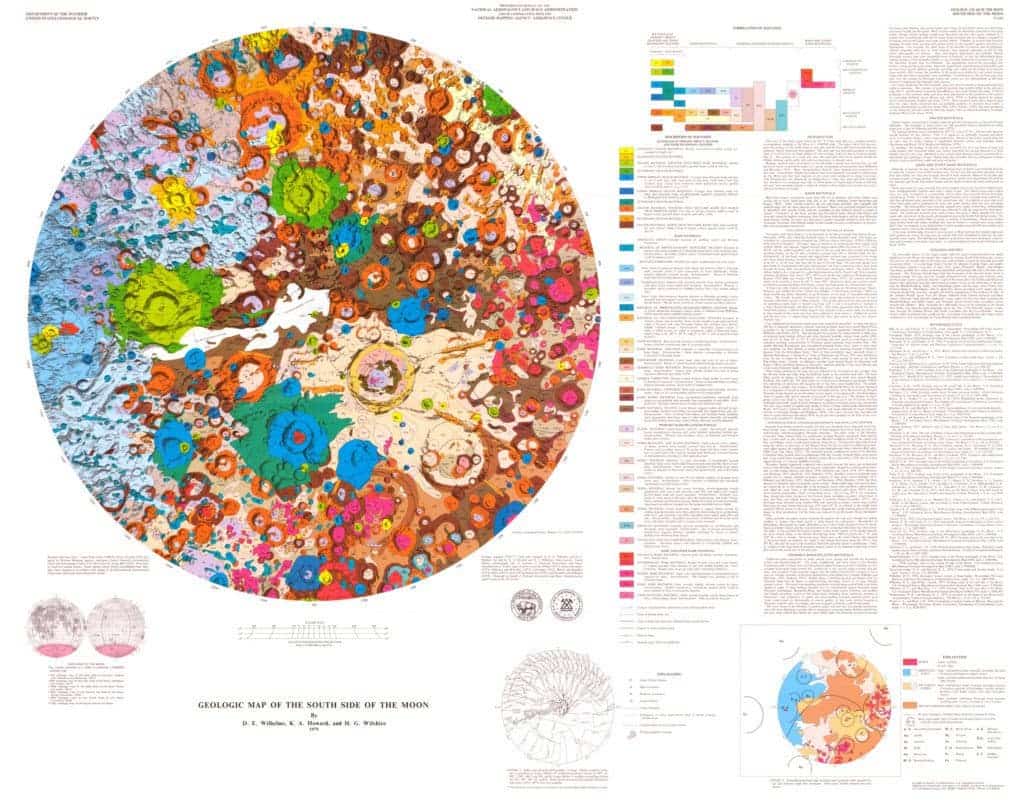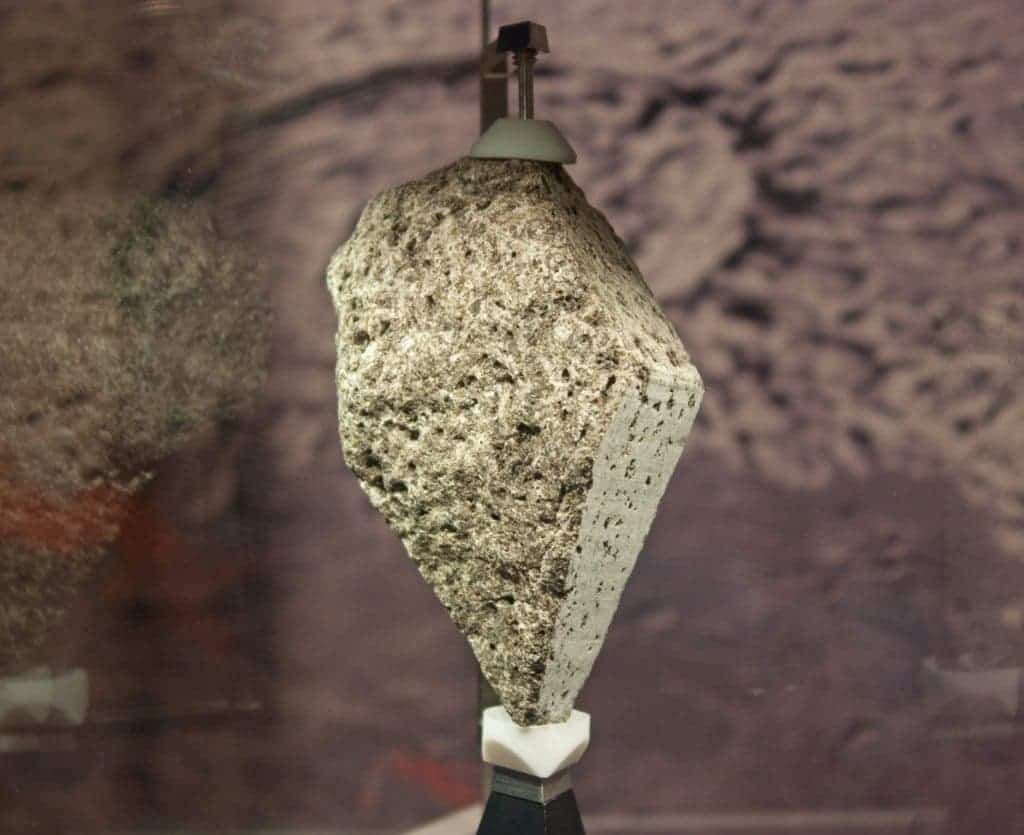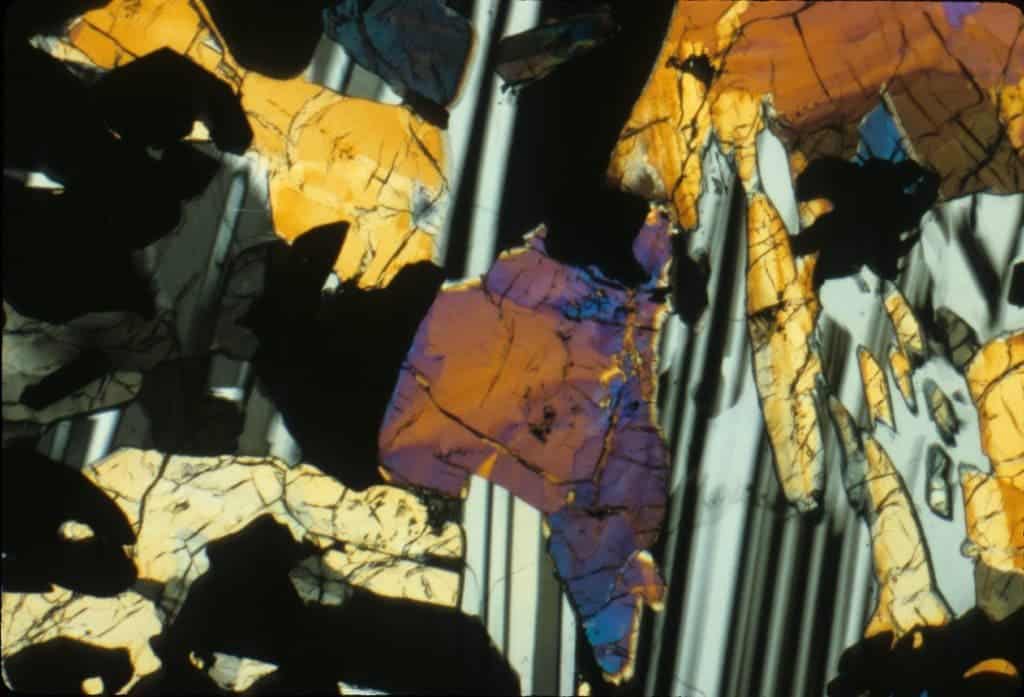
The Moon has quite an interesting geology, one which we’ll examine in detail below. But if you must have a short answer, the most common lunar rocks appear to be basalts, followed by feldspar-rich anorthosite and breccia. The most common elements on the moon’s surface are oxygen, silicon, iron, and calcium – not very much unlike Earth.
The geology of the Moon
The geology of the Moon is very different to that of the Earth: it has no plate tectonics, there is no atmosphere to contribute to rock weathering, and it has a significantly lower gravity and temperature. However, there are also similarities: the Moon also has a differentiated structure, with a crust, a mantle, and a core.

The core of the moon is largely an unknown. From gravity and seismic measurements, there is reason to believe that the core is only about 20% the size of the Moon itself, which is much lower than for Earth and other terrestrial bodies. The composition of the lunar core remains a matter of debate, with geophysicists claiming some kind of metallic iron alloyed with a small amount of sulfur and nickel. The mantle is better constrained and highly heterogeneous. Rocks originating in the mantle and currently found on the surface indicate that the mantle is mostly formed of olivine and pyroxenes, silicate minerals commonly found on Earth in igneous rocks originating from the mantle. But the crust – that’s the most interesting thing, because we can observe it directly.
Rocks on the Moon
Six locations were sampled directly during the manned Apollo landings, which brought back 380.96 kilograms (839.9 lb) of lunar rock and soil to Earth. That’s a lot of material to sample, and geologists have analyzed them quite extensively. Many of the returned rocks were basalts, as the surface of the moon itself indicates.

If you look at the moon directly, you see lighter and darker areas. The darker parts are the maria, plural for seas in Latin. The maria are basically basaltic seas, products of volcanic processes on the Moon. They represent large basaltic flows. They are similar to terrestrial basalts, but also have significant differences; for example, mare basalts show a large negative europium anomaly. Certain mare basalts also exhibit a large quantity of potassium, unlike those found on Earth. So virtually all of the dark areas you see on the near side of the moon are basalts, and while many scientists were suspecting this even before we had samples, getting the chance to analyze them directly was extremely exciting.
The other, lighter areas are just as intriguing. They are also igneous rocks, but unlike the basalts, which are volcanic, the highland rocks are plutonic. Plutonic means that they crystallized from magma slowly cooling below the surface of the Earth and not rapidly through a volcanic eruption. A large part of the highlands is composed of anorthosite, an igneous rock characterized by a predominance of plagioclase feldspar (over 90% feldspar). This feldspar is extremely rich in calcium by terrestrial standards, which tells us that at one point, the lunar environment was depleted of alkalis: potassium and sodium. There are also alkali-rich rocks in the lunar highlands (by lunar standards), but they’re not as common. Another part of the highlands is composed of rocks made of a mixture of pyroxene and olivine – minerals originating from the mantle.


Although quite rare, granites can also be found on the moon, likely as a result of particular crystallizations of magmas. Basically, the magmas started cooling and created crystals from some chemical elements, leaving behind other ones which would eventually go on to form the granites.
The moon’s surface is also dominated by huge impact craters. Impact breccias are thought to be diagnostic of an impact event such as an asteroid or comet striking the surface of the moon. When the impact takes place, it creates huge temperatures and pressure which greatly change the properties of existing rocks. Some breccias are highly glassy, formed from impact melt that exit the crater and entrain large volumes of crushed (but not melted) ejecta.



